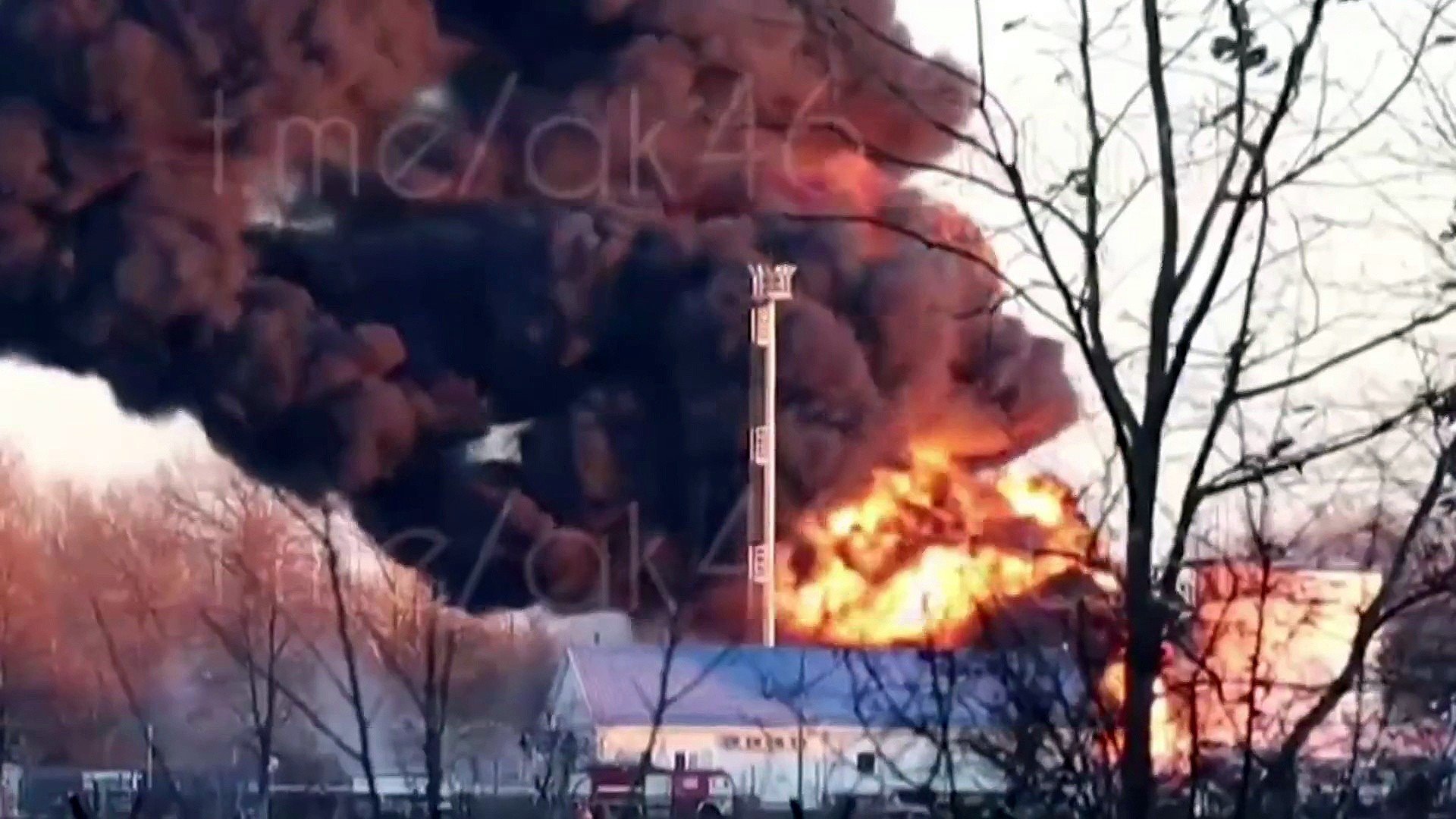On Monday, two separate bases deep inside Russian territory, the Diaghilev military airfields in the Ryazan region and Engels airfield in the Saratov region, were struck by what was likely a large “jet drone,” damaging two warplanes and killing at least three servicemembers.
The next day a third airfield was struck in Kursk, closer to the border with Ukraine, resulting in an oil tanker catching fire. The drones were shot down while flying at low elevation, and the debris resulted in the damage.
Moscow blamed Kyiv, and Kyiv denied it without holding back on the mockery in the least. However, the “jet drone” comment was made by a Kremlin spokesperson and candidly denied in turn by a spokeswoman for Ukroboronprom, Ukraine’s state-run weapons consortium.
“We are telling you almost nothing, but this ‘nothing’ successfully works on the battlefield,” spokeswoman Natalya Sad said in televised remarks.
Mansur Mirovalev, covering the strikes for Al Jazeera, quoted a German historian who said “the weapon is powerful and precise enough to deliver serious damage, including striking anything related to oil, chemicals and energy, as well as large bridges – for example, across the Volga”.
“The weapon” was a little more symbolic than game-changing, but Mirovalev said the “jet drone” could be the Tu-141 reconnaissance drone code-named “Strizh” (Swift), which he describes as capable of traveling 683 miles per hour, and carrying a payload of around 75 kilograms of explosives.
Further, the Swift was reportedly easy to manufacture, developed during the Soviet occupation of Afghanistan in the city of Kharkiv, from which its assembly could have easily been replicated elsewhere, and Ukroboronprom last year said they were working on a “heavy drone”.
Heating up
The US State Department was by contrast, quick to establish that they had no hand in this, which is plausible since weaponry capable of targeting Russian territory has been deliberately omitted from military aid.
“We are not enabling Ukraine to strike beyond its borders. We are not encouraging Ukraine to strike beyond its borders,” Department spokesman Ned Price told reporters yesterday.
He added the strikes were not claimed by Kyiv, and there’s no direct evidence of their being used by them.
The Russian Federation continued bombing civilian infrastructure like electric plants, a policy they instituted after similarly ambiguous attacks on the bridges leading to the Crimean Peninsula in October.
The Kremlin said Tuesday that it’s taking necessary measures to counter the attacks.
“Certainly, the push for such terror attacks to continue being openly announced by the Kiev regime is a risk. Of course, it is being taken into account, with all necessary measures being taken,” Kremlin spokesman Dmitry Peskov said, according to the Russian news agency TASS. WaL
PICTURED ABOVE: Fire at the Engels Military Airfield in Saratov. PC: taken from local video footage.



